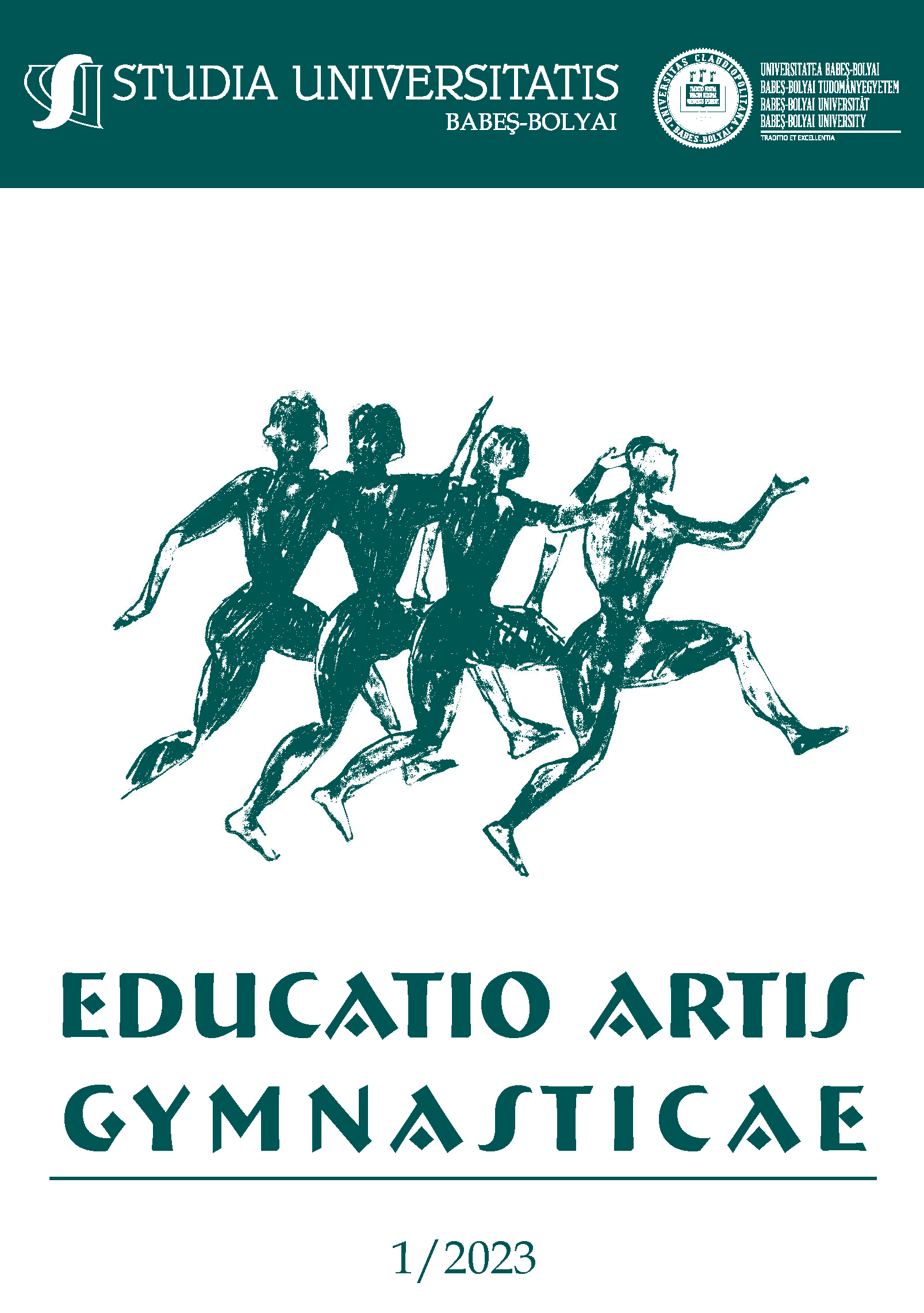BIOMECHANICAL AND THERAPEUTIC IMPLICATIONS OF THE ANATOMICAL LOCATION OF TRIGGER POINTS
DOI:
https://doi.org/10.24193/subbeag.68(1).10Keywords:
myofascial pain, joint hypomotility, brachial, piriformis, arthritisAbstract
This article establishes the existing correlations between the anatomical location of muscle trigger points and their ability to affect joint mobility. Deeply located muscles, such as the brachialis and piriformis, do not have joint biomechanical consequences when they contain trigger points, but are more difficult to approach therapeutically, in the sense that they require the injection of anesthetics or anti-inflammatories, the maneuver being guided by ultrasound. Theoretically, patients with arthritis are more exposed to being affected by such trigger points. Cervical or temporo-mandibular biomechanical disorders are caused by trigger points in the trapezium, respectively sternocleidomestoid.
REZUMAT. Acest articol stabilește corelațiile existente între localizarea anatomică a punctelor trigger musculare și capacitatea acestora de a afecta mobilitatea articulară. Mușchii situați profund, ca de exemplu brahialul și piriformul, nu au consecințe biomecanice articulare atunci când conțin puncte trigger, dar sunt mai dificil de abordat terapeutic, în sensul că necesită injectarea de anestezice sau antiinflamatorii, manevra fiind ghidată ultrasonic. Teoretic, pacienții cu artrită sunt mai expuși de a fi afectați de astfel de puncte trigger. Afecțiuni biomecanice cervicale sau temporo-mandibulare sunt provocate de punctele trigger din trapez, respectiv sternocleidomestoidieni.
Cuvinte cheie: durere miofascială, hipomotilitate articulară, brahial, piriform, artrită
Received 2023 February 08; Revised 2023 April 21; Accepted 2023 April 24; Available online 2023 May 30; Available print 2023 June 30.
References
Aquino-Jose, V. M., Blinder, V., Johnson, J., & Havryliuk, T. (2020). Ultrasound-guided trigger point injection for piriformis syndrome in the emergency department. Journal of the American College of Emergency Physicians open, 1(5), 876–879. https://doi.org/10.1002/emp2.12153.
Bae Y. (2014). Change the myofascial pain and range of motion of the temporomandibular joint following kinesio taping of latent myofascial trigger points in the sternocleidomastoid muscle. Journal of physical therapy science, 26(9), 1321–1324. https://doi.org/10.1589/jpts.26.1321.
Bagcier, F., Yurdakul, O. V., Üşen, A., & Bozdag, M. (2022). The relationship between gluteus medius latent trigger point and muscle strength in healthy subjects. Journal of bodywork and movement therapies, 29, 140–145. https://doi.org/10.1016/j.jbmt.2021.10.001.
Bodes-Pardo, G., Pecos-Martín, D., Gallego-Izquierdo, T., Salom-Moreno, J., Fernández-de-Las-Peñas, C., & Ortega-Santiago, R. (2013). Manual treatment for cervicogenic headache and active trigger point in the sternocleidomastoid muscle: a pilot randomized clinical trial. Journal of manipulative and physiological therapeutics, 36(7), 403–411. https://doi.org/10.1016/j.jmpt.2013.05.022.
Bohlooli, N., Ahmadi, A., Maroufi, N., Sarrafzadeh, J., & Jaberzadeh, S. (2016). Differential activation of scapular muscles, during arm elevation, with and without trigger points. Journal of bodywork and movement therapies, 20(1), 26–34. https://doi.org/10.1016/j.jbmt.2015.02.004.
Bron, C., Franssen, J., Wensing, M., & Oostendorp, R. A. (2007). Interrater reliability of palpation of myofascial trigger points in three shoulder muscles. The Journal of manual & manipulative therapy, 15(4), 203–215. https://doi.org/10.1179/106698107790819477.
Fernández-de-Las-Peñas C. (2009). Interaction between Trigger Points and Joint Hypomobility: A Clinical Perspective. The Journal of manual & manipulative therapy, 17(2), 74–77. https://doi.org/10.1179/106698109790824721.
Gallego-Sendarrubias, G. M., Rodríguez-Sanz, D., Calvo-Lobo, C., & Martín, J. L. (2020). Efficacy of dry needling as an adjunct to manual therapy for patients with chronic mechanical neck pain: a randomised clinical trial. Acupuncture in medicine : journal of the British Medical Acupuncture Society, 38(4), 244–254. https://doi.org/10.1136/acupmed-2018-011682.
Holm-Jensen, A., Kjaer, P., Schiøttz-Christensen, B., Ziegler, D. S., Andersen, S., & Myburgh, C. (2020). The Interexaminer Reproducibility and Prevalence of Lumbar and Gluteal Myofascial Trigger Points in Patients With Radiating Low Back Pain. Archives of rehabilitation research and clinical translation, 2(2), 100044. https://doi.org/10.1016/j.arrct.2020.100044).
Jafari, M., Bahrpeyma, F., & Togha, M. (2017). Effect of ischemic compression for cervicogenic headache and elastic behavior of active trigger point in the sternocleidomastoid muscle using ultrasound imaging. Journal of bodywork and movement therapies, 21(4), 933–939. https://doi.org/10.1016/j.jbmt.2017.01.001.
Jiménez-Sánchez, C., Gómez-Soriano, J., Bravo-Esteban, E., Mayoral-Del Moral, O., Herrero-Gállego, P., Serrano-Muñoz, D., & Ortiz-Lucas, M. (2021). Effects of Dry Needling on Biomechanical Properties of the Myofascial Trigger Points Measured by Myotonometry: A Randomized Controlled Trial. Journal of manipulative and physiological therapeutics, 44(6), 467–474. https://doi.org/10.1016/j.jmpt.2021.06.002.
Kamali, F., Sinaei, E., & Morovati, M. (2019). Comparison of Upper Trapezius and Infraspinatus Myofascial Trigger Point Therapy by Dry Needling in Overhead Athletes With Unilateral Shoulder Impingement Syndrome. Journal of sport rehabilitation, 28(3), 243–249. https://doi.org/10.1123/jsr.2017-0207).
Reynolds M. D. (1981). Myofascial trigger point syndromes in the practice of rheumatology. Archives of physical medicine and rehabilitation, 62 (3), 111–114.).
Rezaeian, T., Mosallanezhad, Z., Nourbakhsh, M. R., Noroozi, M., & Sajedi, F. (2020). Effects of Dry Needling Technique Into Trigger Points of the Sternocleidomastoid Muscle in Migraine Headache: A Randomized Controlled Trial. American journal of physical medicine & rehabilitation, 99(12), 1129–1137. https://doi.org/10.1097/PHM.0000000000001504.
Schneider, E., Moore, E. S., Stanborough, R., & Slaven, E. (2022). Effects of Trigger Point Dry Needling on Strength Measurements and Activation Levels of the Gluteus Medius: A Quasi-Experimental Randomized Control Study. International journal of sports physical therapy, 17(7), 1404–1416. https://doi.org/10.26603/001c.55536.
Sirh, S. J., Sirh, S. W., Mun, H. Y., & Sirh, H. M. (2022). Importance of quadratus lumborum muscle trigger point injection and prolotherapy technique for lower back and buttock pain. Frontiers in pain research (Lausanne, Switzerland), 3, 997645. https://doi.org/10.3389/fpain.2022.997645.
Suh, M. R., Chang, W. H., Choi, H. S., & Lee, S. C. (2014). Ultrasound-guided myofascial trigger point injection into brachialis muscle for rotator cuff disease patients with upper arm pain: a pilot study. Annals of rehabilitation medicine, 38(5), 673–681. https://doi.org/10.5535/arm.2014.38.5.673.
Ziaeifar, M., Arab, A. M., Mosallanezhad, Z., & Nourbakhsh, M. R. (2019). Dry needling versus trigger point compression of the upper trapezius: a randomized clinical trial with two-week and three-month follow-up. The Journal of manual & manipulative therapy, 27(3), 152–161. https://doi.org/10.1080/10669817.2018.1530421
Downloads
Published
How to Cite
Issue
Section
License
Copyright (c) 2023 Studia Universitatis Babeș-Bolyai Educatio Artis Gymnasticae

This work is licensed under a Creative Commons Attribution-NonCommercial-NoDerivatives 4.0 International License.






